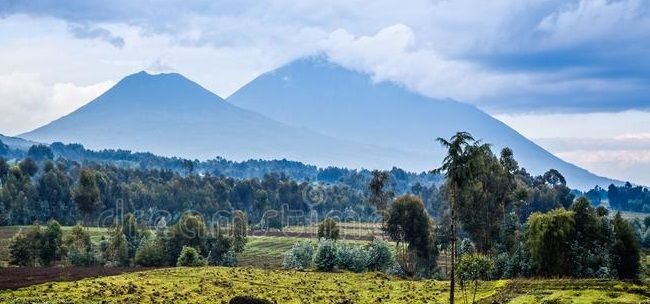The Challenge of Developing East Africa – Part 1

In this post and two to follow, I'll take a look at East Africa, specifically the eight nations of Ethiopia, South Sudan, Uganda, Rwanda, Burundi, Tanzania, Kenya, and the Democratic Republic of the Congo.
This area's population is approaching 400 million people (compared to about 328 million in the U.S), contained with 2.3 million square miles (compared to about 3.1 million for the continental U.S.)
The region's economy stands slightly north of $350 billion annually in nominal GDP terms (comparable to the nation of South Africa), and close to $900 billion in PPP (cost-adjusted) terms (slightly higher than South Africa).
Defining the Region
There is no formal method to define which countries should be included in East Africa, so specific definitions can differ. I'm defining it here to include the six nations of the East African Community (EAC) and their neighbors Ethiopia and the DRC.
The EAC countries aspire to creating a single, federated nation some day; their two neighbors are vast in size and population, so all citizens of the region would benefit from a strong federation and strong relations within these region.
I currently survey 35 African nations among 143 throughout the world. The six EAC nations and their two neighbors finish as follows among the 35 African nations under purview:
1. Rwanda
7. Tanzania
9. Kenya
13. Uganda
15. Ethiopia
22. Dem Rep Congo (DRC)
25. Burundi
32. South Sudan
Rwanda and Its Leader are Key
Rwanda is the rising star in this group. Its high ranking stems primarily from dramatic digital infrastructure improvements brought about in the past few years by its strongman President Paul Kagame, who has been in charge of the country for 20 years now. Paul Kagame is a volatile, controversial figure.
His Rwandan Patriotic Front (RPF) brought an end to the Hutu-Tutsi civil war in the 90s, a ghastly conflict in which at least half a million people were slaughtered for being perceived as having the wrong ethnicity or being on the wrong political side. (The failure of world powers, including the United States, to interceded effectively in this war has been cited by Bill Clinton has his greatest geopolitical failure during his 1993-2000 presidency.)
Over the past 20 years, Kagame has continued to be a major actor and force in this region, and also heads the EAC today. His continued involvement in ongoing war in the eastern regions of the neighboring, enormous DRC are contentious.
Burundi, the other nation in the Hutu-Tutsi disaster, continues to languish economically. Its per capita (per-person) income is the lowest in the world according to the World Bank and International Monetary Fund; the United Nations lists only Somalia with a lower per capita income than Burundi. South Sudan and the DRC are also within the bottom ten in per capita income. The remaining five countries are all within the bottom 20% in the world.
The region gets by on about 1% of the electricity per-person that we expect in the developed world. The numbers calculate to the provision of enough power for only a single 60-watt lightbulb on average for each person in the region. (I wrote about this in 2019.
This almost-continent-sized region remains among the richest in the world in natural resources, from the minerals in its ground to the lush, diverse ecosystems above it. Its Great Lakes region alone offers a biological diversity found in a very few places in the world, and contains more freshwater than the Great Lakes of North America.
“Potential” has been an overused word for East Africa for two centuries, and only today is the region coming to grips with an exploitative colonial past and decades of very rough transition to independent governance.
(The second post in this series will examine the state and potential of foreign investment in this region.)